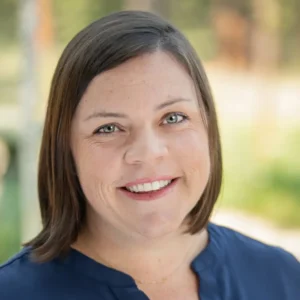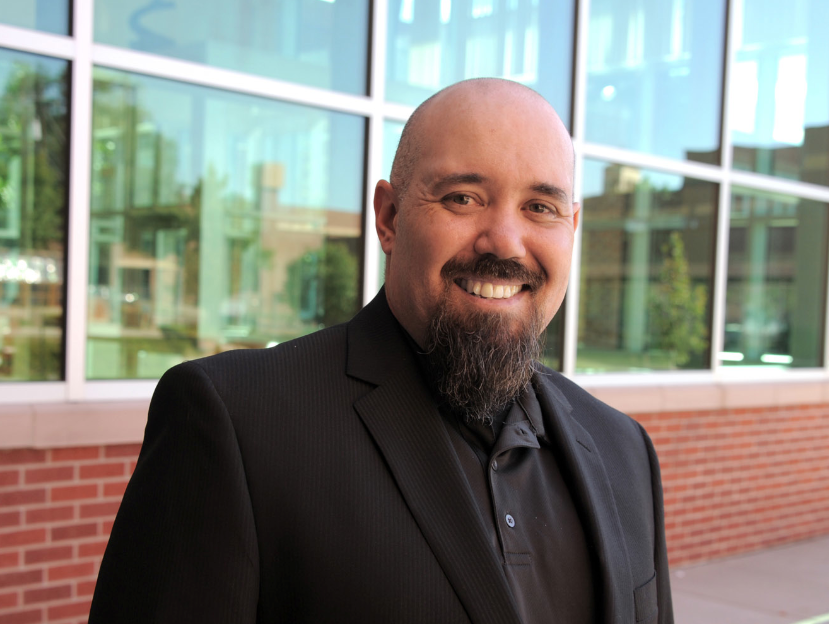Colorado’s Teacher of the Year Creates Relevant Learning for All
In one of Sean Wybrant’s classrooms in Colorado Springs, students are working in teams to create educational games for younger students in the district. In another class, students are crafting business proposals for school improvement projects to be reviewed by l faculty. With his commitment to providing students with real world experiences – in addition to his sheer dedication and passion for teaching – it is easy to see why Wybrant was recently named the 2017 Colorado Teacher of the Year.
The Colorado Department of Education’s announcement cited numerous reasons for the award, including the respect and admiration of colleagues, expertise in his field, and supporting students from all backgrounds to achieve.
Colorado Succeeds recently spoke to Wybrant, a Career and Technical Education (CTE) teacher at William J. Palmer High School in Colorado Springs District 11. Here’s what he had to say about his past 11 years as an educator.
Colorado Succeeds: What got you interested in the profession and becoming a teacher?
Sean Wybrant: Growing up, I had a couple of good experiences with teachers and a couple of bad experiences. I had a teacher who really killed a love of English Literature for many students. This teacher would not only berate me, but other students in the class with her comments and feedback. And I watched her destroy her students love of learning. The next year, there was a teacher that brought us back from that point. That teacher got us to love reading and literature again, and I just recognize how powerful and important the job of a teacher can be. I later realized that if I went into education, I can invest heavily in a single cause and have a huge impact on a lot of causes. I want to save the world. And education is the best way to do that because even if I get only one student per year fired up about whatever they are passionate about, over the course of my career, that’s 30 students impacting the world in positive ways.
I want to save the world. And education is the best way to do that because even if I get only one student per year fired up about whatever they are passionate about, over the course of my career, that’s 30 students impacting the world in positive ways.
CS: Before becoming a CTE teacher you were an English teacher. How did that transition happen?
SW: I didn’t teach my students the way most other teachers were teaching the kids. The whole idea of project-based learning, or direct application, is something I always used. We wouldn’t do anything in my class unless it had a purpose and connection to their everyday lives. The whole point of learning is not so you can do something about it in the future, but because you can do something about it now. Now, as I teach my students about computer science and problem solving it may seem like project-based learning is an exact fit. Our focus on learning should be on that application, regardless of whether we are in a CTE classroom or an English or psychology classroom.
CS: As you know, at Colorado Succeeds, we work with the business community. One of the things our members talk about in terms of college and career readiness are soft skills. How are those skills embedded in your teaching?
SW: I think one of the best ways to embed those skills is giving kids authentic problems to solve. They have to use the soft skills that are needed in business because they are completing projects kind of like a business. An example of this is right now I have students that are developing video games and software solutions for other students who are in younger grades. I contacted some game developers and I asked them what their setup is like, how they put people into teams, and what their design pipeline looks like. In this class then we have team leads, programming teams, and art teams. Each student has a role. They learn soft skills because I put them in an environment where they have to use those skills. The goal of all of that is to make sure that we have final products that students can use and parents and teachers can see them using to reinforce those concepts.
CS: That’s amazing! It sounds like you’re running a small business out of your classroom.
SW: Ha. Basically, but the intention isn’t to make money. If I’m going to teach game programming, it doesn’t make sense to have my room look any different than it would in the industry. And it wouldn’t make sense to have my students produce something that isn’t trying to be produced in the industry right now.
CS: It sounds like this creates relevance for your students.
SW: Most kids aren’t going to be able to get to use a $120,000 motion capture system at home. Our schools in our communities can be a cornerstone for our kids who need these opportunities before they get out into the real world. Another great thing about this program is kids can come in and see if it is the sort of thing they want to do with their life before they have to make the decision. But a lot of kids also come in thinking game programming is the same as playing video games, and it’s not. It is hard work. For a lot of those students, it’s a reality check for them. That’s the goal. Why do our schools look any different than our society does? That doesn’t make any sense.
If I’m going to teach game programming, it doesn’t make sense to have my room look any different than it would in the industry.
CS: I’m curious what’s on the horizon for you? What are you looking to do next?
SW: We are at the edge. We are so close to the edge, that I can’t predict where we are going next. That’s one of the great things about living right now. We are in the future right now. Anytime a visitor comes in and they look at the things we are working on in my classroom, they say they didn’t even know that existed. That’s the typical go-to response. But my kids are used to it. The goal is to get my kids to realize that they can actually make things that impact the world and they really can be the pioneers of new technologies.

